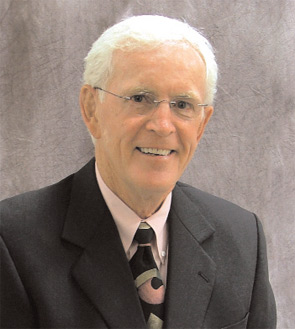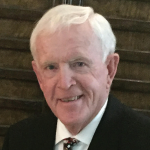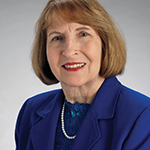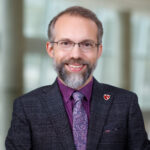We all bring to the table our skills to form a comprehensive treatment plan, and that’s essential for meeting the patient’s total needs. It’s an excellent model to deliver quality care.
—Robert Richardson, PT, MEd
Robert Richardson, PT, MEd, has a lively voice that conveys his deep enthusiasm for a profession he’s had a hand in shaping—though he became a physical therapist almost by accident. From the College recently spoke with him about the long career that earned him the ARHP Lifetime Achievement Award.
Once an aspiring teacher and coach, Richardson was a collegiate wrestler at the University of Pittsburgh when his trainers encouraged him to explore physical therapy instead. He interviewed with the physical therapy program affiliated with his school and was accepted, and his decision was made.
Nearly 50 years later, with a career that includes service as president of both the American Physical Therapy Association (APTA) and the ARHP, Richardson has no regrets. “When I was interviewed by the school, they admitted me, and I knew that meant I had to show up,” he says. “It was probably one of the greatest things that could have happened to me, and I never felt like I made a mistake.” Happily, his work has led him to an academic practice, and so his career has elements of that original aspiration.
Richardson is director of rehabilitation at a small rural hospital, Maria Parham Medical Center in Henderson, N.C. He has been executive director of the hospital’s foundation since 1998 and also holds a teaching position at Duke University in Durham, where his wife, Jan, also a past president of the APTA, is director of the physical therapy school.
A Focused Area of Practice
Richardson says his focus on rheumatology was driven by where he worked for much of his career: St. Margaret Memorial Hospital in Pittsburgh. During his 27 years on staff there, the rheumatology department grew to contain 15 rheumatologists and more than 40 other health-related rehabilitation practitioners. The hospital was able to sustain that growth because it became a tri-state regional referral center. With exposure to rheumatology and orthopedic surgery patients, his interests evolved. “I discovered that the allied health section of the Arthritis Foundation [now the ARHP], that was formed in the late 1960s, had practitioners like me with an interest in the science of the practice, and we were able to work together,” he recalls.
Collaborative treatment in rheumatology care excites Richardson. “We all bring to the table our skills to form a comprehensive treatment plan, and that’s essential for meeting the patient’s total needs,” he says. “It’s an excellent model to deliver quality care. And that’s what keeps me interested in attending the meetings and following the science.”
The Importance of Service
Asked what the recognition for lifetime achievement from the ARHP means to him, Richardson mentions his commitment to service and its early roots. “I was born and raised on a dairy farm in western Pennsylvania—the culture was one of giving to your neighbors and giving back to the community,” he says. “I believe we must serve not only for ourselves, but for the next generation.”
Richardson is committed to passing on his enthusiasm for service to the therapists he trains. “When I teach, I teach that service is essential, and that it is a mark of your professionalism. That’s a core belief,” he says.
“When the light comes on for young therapists and physicians,” he continues, “and they see themselves going beyond the technical or scientific part of what they do, whether it’s a cure or better service or passing the education on to others, that is inspiring. When I see other people who ‘get it’ and demonstrate it in their lifetime, that’s what’s rewarding to me. Watching them grow, develop, and evolve is even more important than teaching.”




